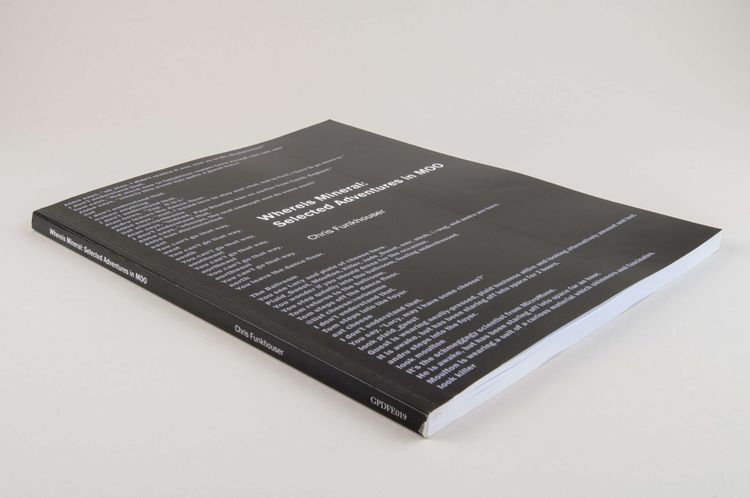“In the early 1990s, MOO, an acronym for M(ulti-User Dungeon) Object-Oriented, enabled many people to connect online—where they’d engage with each other, build digital structures and functioning robots, entirely out of text. […] Whereis Mineral documents the author’s traversing of various online MOOs, most accurately classified as text-based virtual realities, prior to the advent of the WWW. Among other attributes, these logs reflect tests of patience and focus; substantial lags, computer foibles, as well as all sorts of imaginative construction” (blurb on Lulu).
Embedded in the narrative and interactions with others are commands—marked in bold for better distinction—such as “e” for “east” or “u” for “up” which had to be typed in order to be able to move in the MOO. From these commands, the authors’ actions and decisions can be inferred. What is documented here is not only an early form of real-time textuality bound to the computer: it also raises the question of collaborative authorship, since many people co-wrote the text.
Even though this work does not have a traditional, complex narration, what does emerge is a detailed picture of a virtual space and a lively community of avatars with different interests, identities, and languages. A case in point might be LambdaMOO, whose logon screen reads: “LambdaMOO is a new kind of society, where thousands of people voluntarily come together from all over the world. What these people say or do may not always be to your liking; as when visiting any international city, it is wise to be careful who you associate with and what you say. / The operators of LambdaMOO have provided the materials for the buildings of this community, but are not responsible for what is said or done in them” (Whereis Mineral, “Afterword”).
The author sets out in this virtual society to find a poet friend with the avatar name Mineral (who, by his own admission, was more into the LambdaMOO subculture than the real world at the time), “looking to see if and where he was online, frequently following his path.” Hence the title Whereis Mineral. At the same time, “Whereis Mineral wishes to raise a literal question of the title, where is the ‘mineral,’ the inner ore of one’s expressiveness in technologized literary forms?” (Whereis Mineral, “Afterword”)
